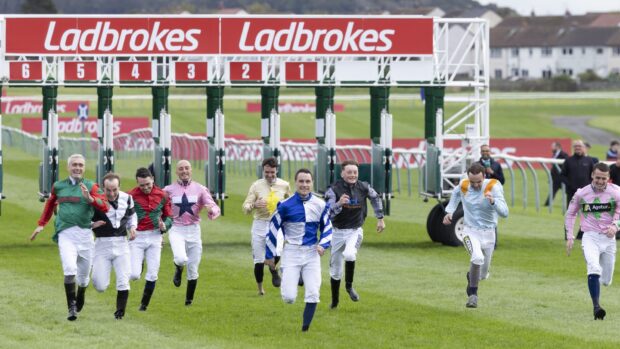As the point-to-point season draws closer jockeys aiming to take part in their first season between the flags will need to ensure they have all the necessary kit.
A new helmet and body protector must be owned by the jockey, not borrowed, and will cost around £200. Minimum standards for both are set out in the point-to-point regulations book. Go to a trained retailer to be sure of a proper fit.
Helmets will need to be replaced after every heavy fall, as the lining will have suffered even if there is no visible damage. The same applies to body protectors, whose absorbency weakens with falls. Those with interchangeable panels tend to fit best and the panels can be replaced individually.
A new racing saddle will cost somewhere between £150 and £400, although a second-hand one will do the job equally well.
Upwards of £100 will be required for a new pair of boots, but a used pair will suffice as long as they are married up with stirrup irons that fit. Racing boots are made of very thin leather and have flexible soles, so some riders wear strapping on the lower leg to prevent rubbing against the stirrup leather.
Gloves should neither slip nor be so grippy that they prevent slipping the reins. Synthetic gloves are the choice of most riders.
Another must is a pair of goggles. These cost about £10, and should last some time unless they get broken in a fall. Experienced riders sometimes go out with two or three pairs if the ground is heavy and pull a pair down once they get mud-splattered.
Whips, which are checked randomly, must be of regulation dimensions, with a maximum length of 68cm, including the flap, a minimum diameter of 1cm, and weigh not more than 160gms. The flap at the end of the shaft must be no more than 10cm, and both the shaft and flap must be shock absorbent.
There is no requirement to register colours for point-to-pointing. Many jockeys consider new colours unlucky, so pristine ones are rarely seen.
When looking to purchase racing gear remember that riders who have retired from racing will often hand down their gear for next to nothing, so it is worth asking around. Tack shops often have second-hand racing sections, while jockeys’ valets also tend to know what’s for sale.
Finally, once you have assembled all your clothing and equipment it is a good idea to have a trial outing at home to check everything is comfortable.
The 6 January 2005 Horse & Hound includes a list of suppliers of new racing kit, as well as charting the progress of point-to-point first-timers Luke Johnson and David Greenway.



